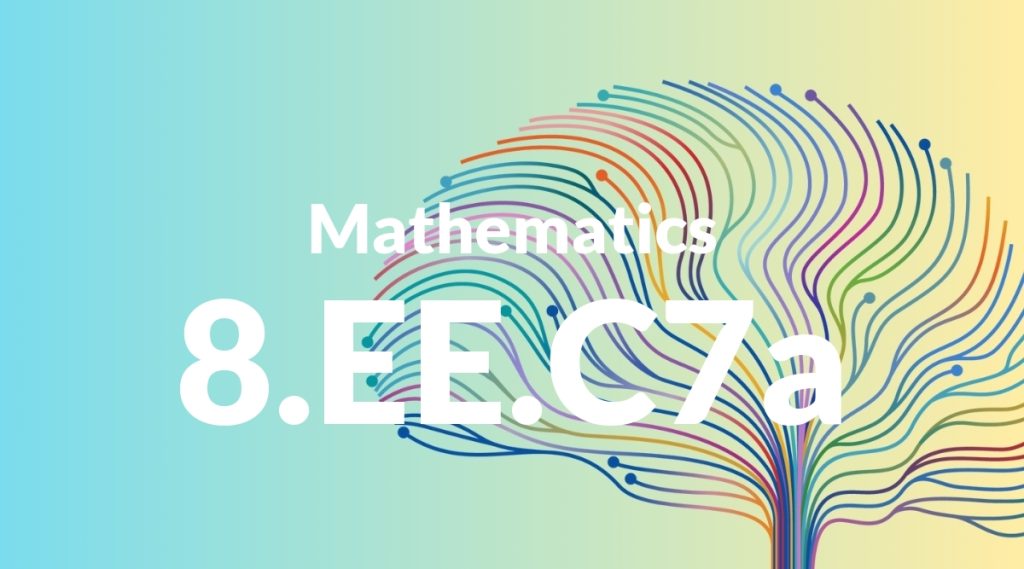Standard: 8.EE.C7a – Give examples of linear equations in one variable with one solution, infinitely many solutions, or no solutions. Show which of these possibilities is the case by successively transforming the given equation into simpler forms, until an equivalent equation of the form x = a, a = a, or a = b results (where a and b are different numbers).
Grade level: Grade 8
Subject: Mathematics
Domain: Expressions & Equations
Teacher Overview
This standard focuses on understanding and solving linear equations in one variable. It is crucial because it sets the foundation for more advanced algebraic concepts and problem-solving skills that students will encounter in higher grades. Students should have a strong grasp of basic algebraic principles, including the ability to manipulate and simplify expressions and solve simple linear equations.
Mastering this standard prepares students to handle more complex algebraic concepts, including systems of equations and quadratic equations, and enhances their overall problem-solving abilities.
Common Misconception 1
A common misconception is that all linear equations have exactly one solution. This is incorrect because linear equations can have one solution, no solution, or infinitely many solutions depending on their structure.
Intervention 1
Provide students with varied examples of linear equations and guide them through the process of identifying the number of solutions by simplifying the equations.
Common Misconception 2
Another misconception is that simplifying an equation always leads to a unique solution. This is not always true; some equations simplify to a contradiction (no solution) or an identity (infinitely many solutions).
Intervention 2
Use targeted practice problems that include equations with no solution and infinitely many solutions, and discuss the reasoning behind these outcomes with students.
Prerequisite Knowledge
Students should be familiar with basic algebraic concepts, including understanding variables, constants, and the properties of equality. They should also have experience with simplifying algebraic expressions and solving simple linear equations.
Subsequent Knowledge
After mastering this standard, students will be able to tackle more complex algebraic equations, including systems of equations and quadratic equations. They will also develop a deeper understanding of functions and their properties.
Instructional Activities
- Work through examples of linear equations with different types of solutions.
- Use real-world scenarios to create and solve linear equations.
- Incorporate group activities where students create and solve equations for each other.
- Utilize technology, such as graphing calculators or algebra software, to visualize the solutions of linear equations.




